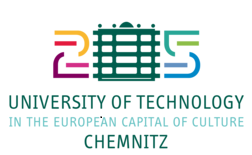A Study on the Effect of Visual and Auditory Tools in Foreign Language Teaching
DOI:
https://doi.org/10.71514/jssal/2022.52Keywords:
Foreign language teaching, teaching tools, learning styles, technological devices.Abstract
In this article, the task and function of visual and auditory tools used in foreign language teaching, together with technological progress, are explained. Digital devices that enter human life play an important role in foreign language teaching and learning, as in every field. New visual and auditory learning models emerge according to intelligence types and learning styles. Using tools and equipment such as mobile learning, computerized material preparation, computerized teaching and learning, flash disks, DVD-VSD, smart boards, and projectors have created new models in foreign language education and teaching. The increasing importance of the internet in human life and virtual programs such as Facebook, Youtube, and Instagram, which develop on the Internet, accelerate thinking differently. Traditional language teaching and methods (texts, grammar-translation methods, communicative methods, functional language teaching, etc.) can no longer meet the needs. It has become a necessity that language teaching and learning should be considered together with cultural elements. It has forced both language education institutions, teachers, and language learners to think differently. As a result of all these, individual learning differences have emerged in acquiring and acquiring a new language. Accordingly, it is necessary to develop a new vision.
Downloads
References
Aksoy, H. (2021). The Relationship between Grammar and Vocabulary Levels and Their Writing Skills of Those Who Learn Turkish as a Foreign Language.Journal of Research in Social Sciences and Language,1(1), 18-29. http://dx.doi.org/10.20375/0000-000D-FEA9-7
Aksoy, Y. (2015). Özengen Keman Eğitiminde Video Destekli Öğretimin Keman Performasına Etkisi. Yüksek Lisans Tezi. Konya: Pegem A Yayıncılık.
Aktaş, T. (2005). Yabancı Dil Öğretiminde İletişimsel Yeti. Journal of Language and Linguistic Studies, 1(1), s. 89-100. https://dergipark.org.tr/en/pub/jlls/issue/9921/122834
Arslan, M. & Adem, E. (2010). Yabancılara Türkçe Öğretiminde Görsel ve İşitsel Araçların Etkin Kullanımı. Dil Dergisi, (147), s. 63-86. https://app.trdizin.gov.tr/publication/paper/detail/TVRNME9URTVPUT09
Başaran, B.İ. (2004). Etkili Öğrenme ve Çoklu Zekâ Kuramı: Bir İnceleme. Ege Eğitim Dergisi, s. 7-15. https://dergipark.org.tr/en/pub/egeefd/issue/4920/67308
Bellanca, J. (1997). Active Learning Handbook for Multiple Intelligence Classrooms. SAGE Publications Inc.
Black, A E. & Deci, E L. (2000). The effects of instructors' autonomy support and student' autonomous motivation on learning organic chemistry: A self-determination theory perspective. Science education, s. 740-756. https://doi.org/10.1002/1098-237X(200011)84:6<740::AID-SCE4>3.0.CO;2-3
Brown, H.D. (2014). Principles of Language Learning and Teaching (6th ed.). New York: Pearson Education.
Bumen, N.T. (2004). Okullarda Çoklu Zeka Kuramı. Ankara: Pegem Akademi Yayıncılık.
Erol, H.F. & Gülcü, İ. (2016). Yabancı Dil Olarak Türkçenin Bilgisayar Destekli Öğretimi ile İlgili Yabancı Öğrenci Görüşleri. Turkish Studies, 11(3), s. 1115-1130. https://app.trdizin.gov.tr/publication/paper/detail/TWpnek5UWXlNZz09
Freifeld, E.B. (2006). Feature film as a means of professional and personal development of students in the study of a foreign language in higher education. Dissertation for the degree of candidate of pedagogical sciences. Nizhny Novgorod, Russia.
Fulk, B.M. & Montgomery-Grymes, D.J. (1994). Strategies to Improve Student Motivation. Intervention in School and Clinic, 30(1), s. 28-33. https://doi.org/10.1177/105345129403000105
Gardner, H. (1993). Multiple Intelligences: The Theory in Practice. New York, I, USA: Basic Books.
Geçgel, H. & Peker, B. (2020). Multimedya araçlarının yabancı dil çğretimine etkisi üzerine öğretmen görüşleri. RumeliDE Journalof Language and Literature Studies, 20(12), s. 12-22. https://doi.org/10.29000/rumelide.791070
Göçen, G. (2020). Türkçenin yabancı dil olarak öğretiminde yöntem. RumeliDE Dil ve Edebiyat Araştırmaları Dergisi(18), s. 23-48. https://doi.org/10.29000/rumelide.705499
Göçerler, H. & Çoraklı, Ş. (2019). Yabancı Dil Derslerinde Motivasyon, Öğrenme Stilleri ve Medya Kullanımı Konularında Akıllı Tahtaların Yeri. R&S - Research Studies Anatolia Journal, 2(4), s. 72-82. https://doi.org/10.33723/rs.510300
Güçlü, B., Arslan, M., & Üstünyer, İ. (2017). Teaching Vocabulary in Turkish Language for Foreigners at Beginner Level Using Suggestopedia. International Journal of Research in Social Sciences, 7(11), p. 36-43. https://indianjournals.com/ijor.aspx?target=ijor:ijrss&volume=7&issue=11&article=004
Güzel, A. & Barın, E. (2013). Yabancı dil olarak Türkçe öğretimi. Ankara: Akçağ Yayınları.
Herron, J.D. & Nurrenbern, S.C. (1999). Improving Chemistry Learning. Journal of Chemical Education, 99(76), p. 1353-1361. https://doi.org/10.1021/ed076p1353
Kaya, Z. (2006). Öğretim Teknolojileri ve Materyal Geliştirme. Ankara: Pegem Yayıncılık.
Keser, S.Y. (2011). Rusça Konuşma Dilinde Kullanılan Sözcük Öğelerinin ''Peter Fm'' Filmi Üzerinden Öğretim Metotları. Yüksek Lisanas Tezi, 91. İstanbul, Türkiye.
Oz, H. (2014). Mobil Öğrenme, Mobil Dil Öğrenme. II Ulusal Yabancı Dil Çalıştayı Bildirileri 8-9 Kasım 2014 (131-139). Ondokuz Mayıs Üniversitesi Eğitim Fakültesi Yabancı Diller Bölümü İngiliz Dili ve Edebiyatı Ana Bilim Dalı.
Peçenek, D. (2005). Yabancı Dil Öğretiminde Araç Geliştirme. Dil Dergisi (129), s. 85-95. https://www.ceeol.com/search/viewpdf?id=563920
Saraç, H. (2012). ''Seni Seviyorum, Moskova'' Filmi Perspektifiyle Türk Öğrencilere Kültür ve Dil Yetkinliği Kazandırma Metotları Oluşturma [Формирование лингвокультурологической компетенции турецких учащихся на практических занятиях русского языка (на материале фильма «москва, я люблю тебя»]. Yüksek Lisans Tezi, 205. İstanbul, Türkiye. https://tez.yok.gov.tr/UlusalTezMerkezi/tezSorguSonucYeni.jsp
Saraç, H. (2012). Yabancı Dil Öğretimi Sürecinde Sanatsal Filmler. İdil, 1(4), s. 27-42. https://www.ceeol.com/search/viewpdf?id=712207
Sharples, M., Amedillo-Sanches, I., Milrad, M., and Vavoula, G. (2009). Mobile learning: N. Balacheff, S. Ludvigsen, T. Jong, A. Lazonder & S. Barnes içinde, Technology-Enhanced Learning (233-249). Heidelberg: Springer.
Ünal, K. (2016). Ana Dili Türkçe Olan Öğrencilerin Rus Dili Ediniminde Yaptığı Fonetik Hatalar Üzerine Bir Araştırma. Uluslararası Sosyal Bilimler Dergisi, 1, s. 17-33.
Wery J., Thomson M.M. (2013). Motivational strategies to enhance effective learning in teaching struggling students. Support for Learning, 28(3), s. 103-108. https://doi.org/10.1111/1467-9604.12027
Downloads
Published
How to Cite
Issue
Section
License
Copyright (c) 2022 Kerami Ünal

This work is licensed under a Creative Commons Attribution-NonCommercial 4.0 International License.
The work is made available under the terms of the Public Offer and the Creative Commons Attribution 4.0 International License (CC BY 4.0). This license allows anyone to reproduce, distribute, and adapt the material in any medium or format, including for commercial purposes, provided that proper credit is given to the creator(s) and the original source.












